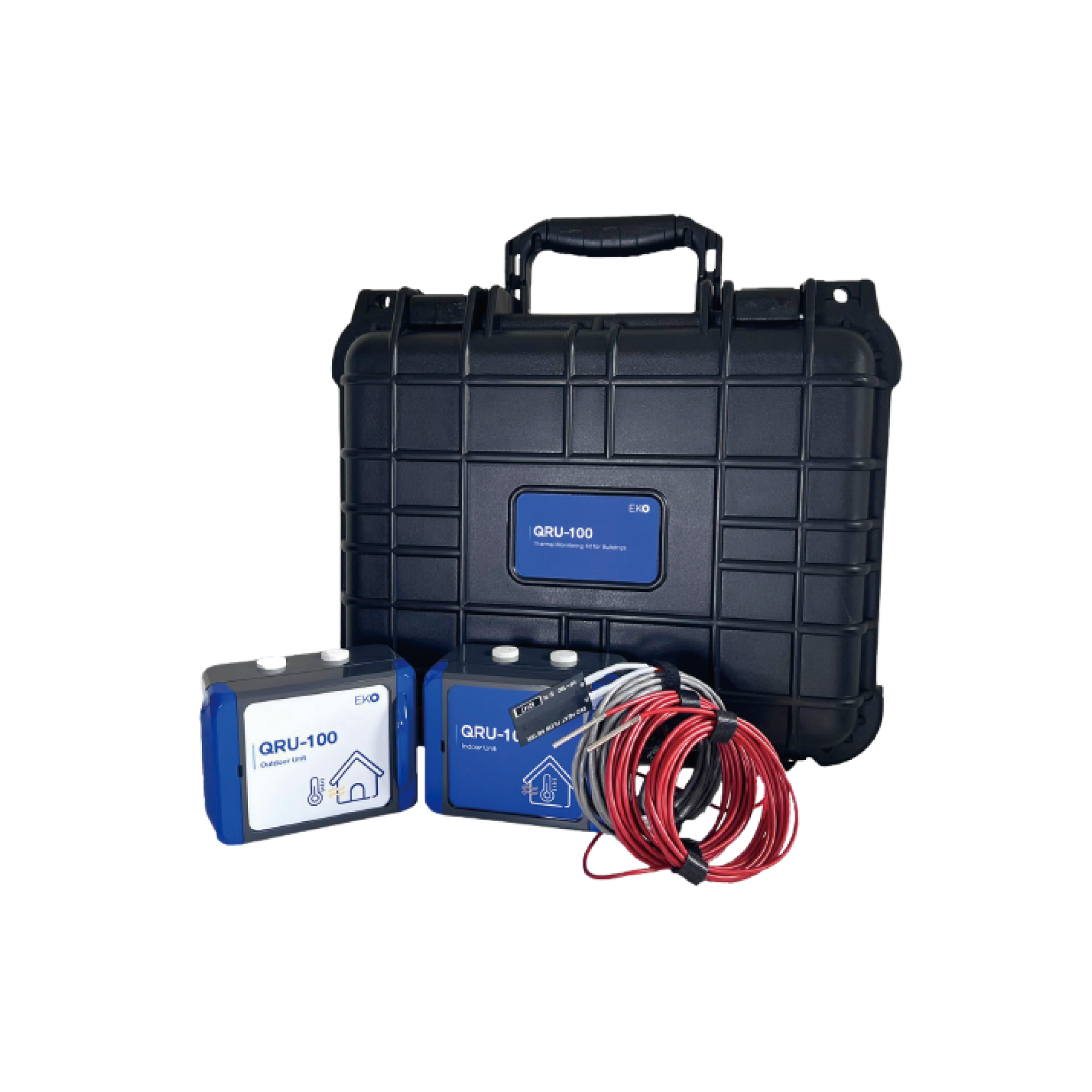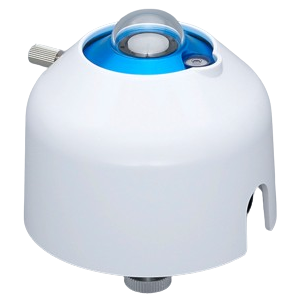Menu
Menu

The QRU-100 is designed to make the thermal performance evaluation of buildings and components easy, efficient, and accurate.
A critical requirement for modern construction, renovation, quality assurance, and energy efficiency assessment, the QRU-100 thermal monitoring kit includes separate indoor and outdoor measuring units. Indoor heat flux monitoring, together with indoor and outdoor temperature sensors, allow the QRU-100 to measure both thermal transmittance and thermal resistance, the U and R-Value of a wall or similar structure based on the standard methods defined in ISO 9869, ASTM C1046 and ASTM C1155.
The QRU-100 is delivered in a weather-proof case. Each measuring unit has a long-life battery and ultra-high-resolution data-logger that can store up to 4 million data points, preconfigured and ready to use.
Key Features:
| Number of measurement points | 3 |
|---|---|
| Logger Operating temperature range | -40 to +90°C |
| Data storage | 4 Million Data points |
| Datalogger battery life | Interval: >1min : 4 years – 10s : 230 days |
| Battery type of the data logger | Lithium type SL-750/S |
| Interface | USB to PC |
| Software | InfraLog 5 |
| Measurement unit IP level | IP66, IP68 |
| Transport case IP level | IP67 |
| Weight (Measurement unit) | 0.335 kg |
| Weight (incl Transport case) | 2.5 kg |
| Dimensions (Measurement Unit) | 113 x 80 x 60 mm |
| Dimensions (Transport case) | 350 x 295 x 150 mm |
| Sensor specifications : | |
| Heat flux sensor type | EKO MF-180 |
| Heat flux sensor nominal sensitivity | Approx. 28 μV/W/m² |
| Heat flux range | ±1500 W/m² |
| Heat flux sensor temperature range | -30 to 120°C |
| Temperature Sensor type | PT-1000, 4-wire |
| Temperature sensor accuracy | 1/10 DIN class |
| Temperature Sensor Range | -60 to 180°C |
| Sensor Cable Length | 3 m |
Contrary to popular belief, Lorem Ipsum is not simply random text. It has roots in a piece of classical Latin literature from 45 BC, making it over 2000 years old. Richard McClintock, a Latin professor at Hampden-Sydney College in Virginia, looked up one of the more obscure Latin words, consectetur, from a Lorem Ipsum passage, and going through the cites of the word in classical literature, discovered the undoubtable source. Lorem Ipsum comes from sections 1.10.32 and 1.10.33 of “de Finibus Bonorum et Malorum” (The Extremes of Good and Evil) by Cicero, written in 45 BC. This book is a treatise on the theory of ethics, very popular during the Renaissance. The first line of Lorem Ipsum, “Lorem ipsum dolor sit amet..”, comes from a line in section 1.10.32.
The standard chunk of Lorem Ipsum used since the 1500s is reproduced below for those interested. Sections 1.10.32 and 1.10.33 from “de Finibus Bonorum et Malorum” by Cicero are also reproduced in their exact original form, accompanied by English versions from the 1914 translation by H. Rackham.




